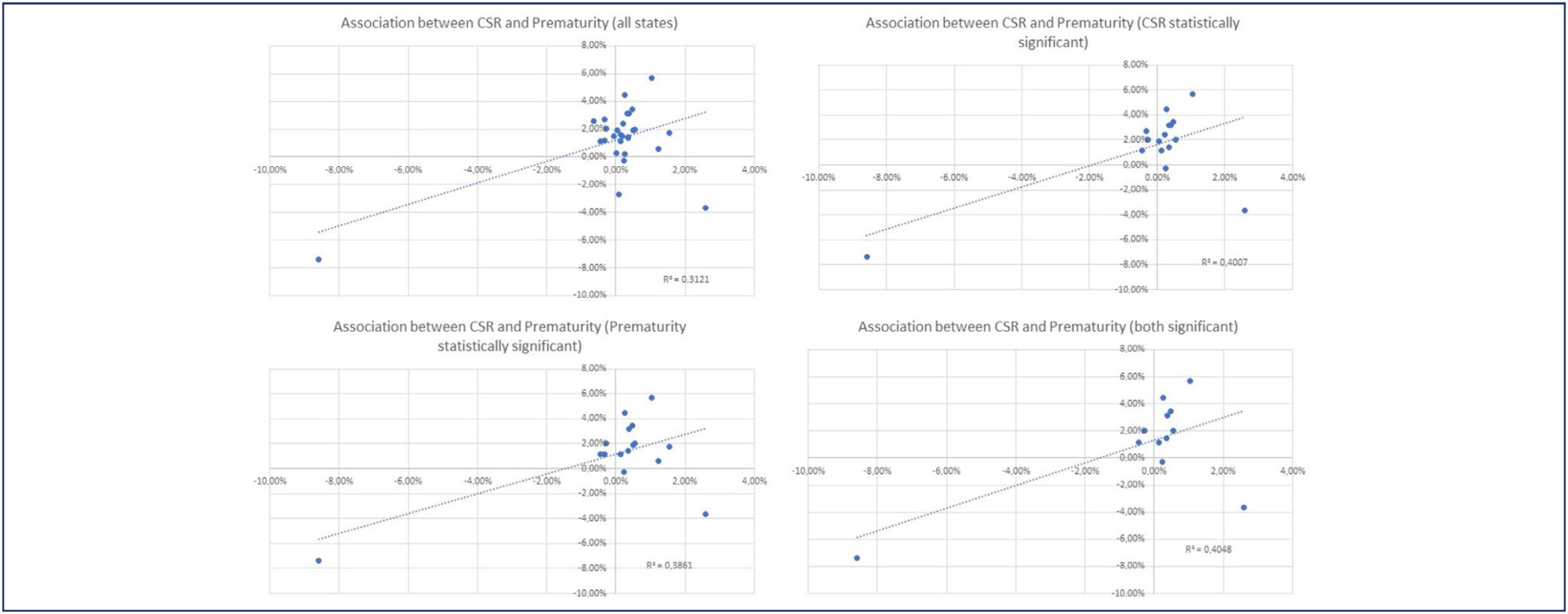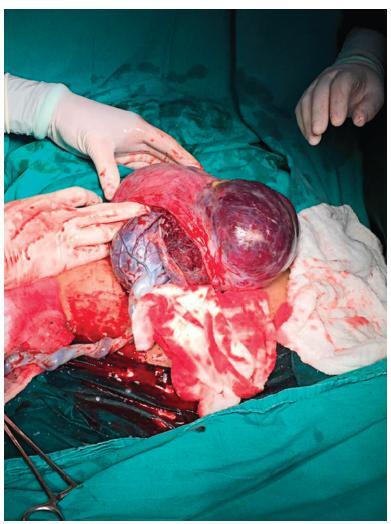Summary
Revista Brasileira de Ginecologia e Obstetrícia. 2025;47:e-rbgo6
03-18-2025
To investigate the relationship between prematurity and cesarean section rate in Brazil during the beginning of COVID-19 pandemic.
Utilizing the Robson Classification, this study analyzed data from the Brazilian Ministry of Health's Live Births Panel, comparing CSR) and group 10 (preterm deliveries) between 2019 (pre-pandemic) and 2021 (pandemic) in each of Brazilian states and the overall country. The prematurity and CSR were compared using prevalence ratio and confidence interval, and p-value was obtained. The variation of prematurity and CSR were compared through the coefficient of determination (R2).
A total of 5,522,910 deliveries were evaluated during the period. The CSR increased from 56.34% to 57.05% (p<0.01), and the frequency of preterm deliveries rose from 8.99% to 9.13% (p<0.01). The CSR increased in 23 States and decreased in 4 States, while the prematurity rate increased in 16 States and decreased in 10 States. A positive relationship between the increase of CSR and prematurity was observed during COVID-19, with an R2 value of 0.3121, suggesting a moderate association between these two variables.
Between 2019 (pre-COVID-19 pandemic) and 2021 (the first full year of the COVID-19 pandemic), there was an increase in prematurity and CSR in Brazil. These increases were observed in most Brazilian states and may be correlated. However, it is impossible to establish a cause-effect relationship given the design of this study.

Summary
Revista Brasileira de Ginecologia e Obstetrícia. 2018;40(8):494-496
08-01-2018
Placenta accreta syndromes are associated with increased maternal mortality and morbidity. Cesarean hysterectomy is usually performed in cases of placenta accreta syndrome. Fertility sparing methods can be applied. In the present study, we report a successful segmental uterine resection method for placenta accreta in the anterior uterine wall in a cesarean section case. A 39-year-old woman underwent an elective cesarean section at 38 + 2 weeks. A placental tissue with an area of 10 cm was observed extending fromthe anterior uterine wall to the serosa, 2 cm above the uterine incision line. The placental tissue was removed with the help of monopolar electrocautery. The uterine incision was continuously sutured. The patient was discharged on the second postoperative day. The placental pathology was reported as placenta accreta. The American College of Obstetricians and Gynecologists (ACOG) generally recommends cesarean section hysterectomy in cases of placenta accreta because removal of placenta associated with significant hemorrhage. Conservative and fertility sparing methods include placenta left in situ, cervical inversion technique and triple-P procedure. There are several studies reporting that segmental uterine resection is performed with and without balloon placement or artery ligation. Segmental uterine resection may be an alternative to cesarean hysterectomy to preserve fertility or to protect the uterus in cases of placenta accreta when there is no placenta previa. received

Summary
Revista Brasileira de Ginecologia e Obstetrícia. 2005;27(4):189-196
07-30-2005
DOI 10.1590/S0100-72032005000400005
PURPOSE: to create a predictive model for cesarean section at the "Professor Monteiro de Morais Maternity" after evaluation of antepartum risk factors of the pregnant women who delivered from September 1, 1999 to August 31, 2000, and then, to verify the efficacy of indication for cesarean section. METHODS: a longitudinal, case control study with 3.626 pregnant women was performed to identify the antepartum risk factors for cesarean section in the period from September 1, 1999 to August 31, 2000. Thereafter an ideal model able to quantify the risk for cesarean section for each patient in the presence of one or more risk factor was created. Then, the model was applied to the patients of the study in order to verify the efficacy of indication for cesarean section. RESULTS: the baseline risk for cesarean section was 15.2%. The concordance between the percentage estimated through logistic model and cesarean delivery was 86.6%. CONCLUSIONS: the logistic model was able to identify the baseline risk for cesarean section and to quantify the increase in risk for cesarean section in each patient when risk factors were introduced in the model. The model can be considered efficient and able to predict cesarean section because the agreemant between the prediction and the correct indication was 86.6%, and 53.6% of the patients who had vaginal delivery did not have any risk factor for cesarean section.